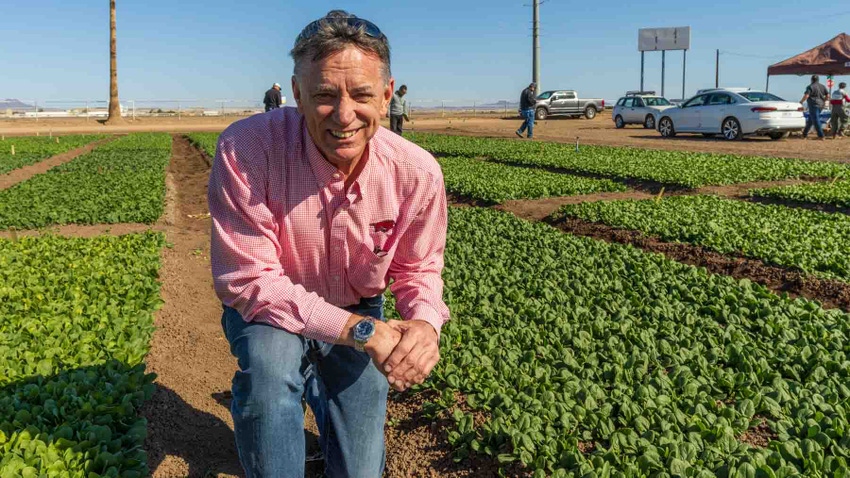
Downy mildew in spinach is like the Triple Crown racehorse, according to a plant pathologist who’s spent much of his career looking at the disease in the West, and around the world. It spreads and mutates faster than scientists can work to hold it back.
Jim Correll is a distinguished professor in the Department of Plant Pathology at the University of Arkansas. He travels each winter to Yuma, Ariz. to study research plots at the University of Arizona research farm, and to similar plots in the late summer in the Salinas Valley of California. His work: find, test, and release spinach that can withstand downy mildew. It’s a race, because the cultivars he finds that shows promise one year, can lose their resistance to downy mildew within a couple of years.
The pathogen that leads to downy mildew can change that fast, he said.
“What works here this year might not work next year because of the pathogen changing,” he said.
“We’ve had varieties that are released, and they’re completely resistant to everything we know about,” he continued. “And within a year they will be a strain that develops, and it will completely wipe out that variety.”
Correll took part in a field day at the University of Arizona research farm ahead of the annual Southwest Ag Summit in Yuma. The summit draws growers and researchers to talk of new technologies to aid the region’s multi-billion dollar produce industry. He also spoke at the event on plant disease challenges in leafy greens.
Dramatic changes
The way spinach is grown in the U.S., and particularly the West, “changed pretty dramatically in the last 25 years in terms of production,” Correll said at the summit. What was once low densities of plants in two rows on a 40-inch bed transitioned to 80-inch beds. As spinach is intensively grown in the West because of its popularity with consumers, switching back and forth from the California coast to the low desert of southern California and southwest Arizona, creates a problem in disease management.
“We are not rotating as much,” he said. “I tease a lot of growers in Salinas who think a good idea of crop rotation is to rotate between baby and teen leaf spinach. That’s not good for trying to manage diseases.”
A further challenge was the discovery of millions of oospores produced on a single spinach leaf. These will go through their own biological cycle and quickly infect the plants. He admits that there are parts of this life cycle that researchers don’t yet have a firm understanding of – namely the resistant oospores, which he said can be in the soil and on spinach seeds. Correll is collaborating with other researchers to better understand this.
“We’re in a sprint here,” he said. “I tease my plant breeder friends that while they work hard and might work 80 hours a week, these pathogens are working 24 hours, seven days a week, 365 days a year.”
About the Author(s)
You May Also Like






